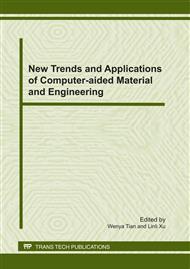p.241
p.246
p.251
p.256
p.261
p.266
p.271
p.277
p.281
A Novel Human Action Recognition Algorithm Based on Edit Distance
Abstract:
A novel human action recognition algorithm based on edit distance is proposed in this paper. In the method, the mesh feature of each image in human action sequence is firstly calculated; then the feature vectors are quantized through a rival penalized competitive neural network; and through this processing, the time-sequential image sequences are converted into symbolic sequences. For human action recognition, the observed action is firstly vector quantized with the former competitive neural network; then the normalized edit distances to the training samples are calculated and the action which best matches the observed sequence is chosen as the final category. The experiments on Weizmann dataset demonstrate that our method is effective for human action recognition. The average recognition accuracy can reach above 94%.
Info:
Periodical:
Pages:
261-265
Citation:
Online since:
January 2011
Authors:
Price:
Сopyright:
© 2011 Trans Tech Publications Ltd. All Rights Reserved
Share:
Citation:


